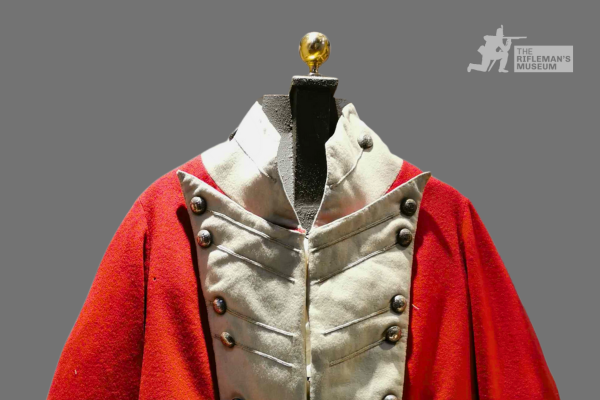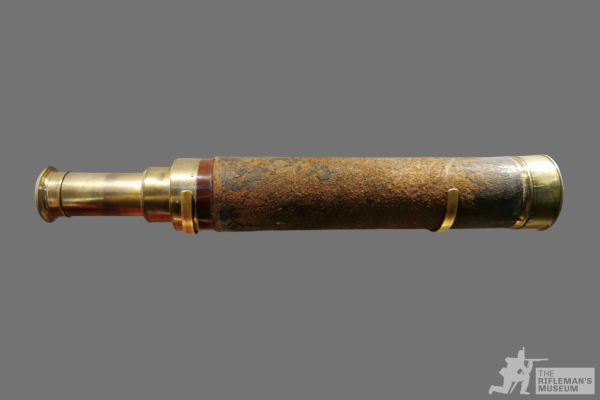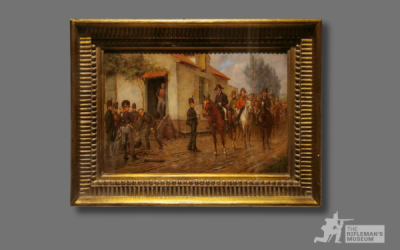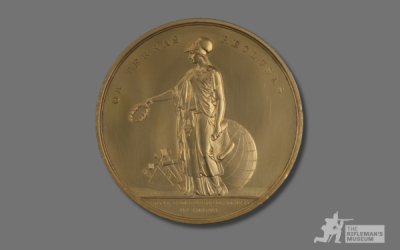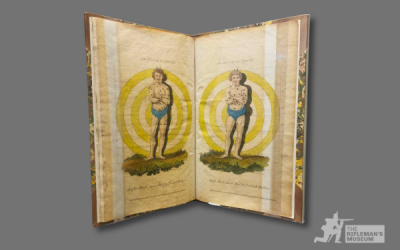Item details: A double-breasted, short-tailed coatee, scarlet with buff collar, cuffs, facings, and skirt lining, featuring a ‘Prussian-style’ collar. Two rows of buttons in pairs bear the crown above the number “52” within laurel sprays, with “Oxfordshire” along the bottom rim.
About the Item
This coatee belonged to Lieutenant-Colonel John Hunt of the 52nd (Oxfordshire) Regiment of Foot (Light Infantry). The buttons bear the pattern used between 1804 and 1855. As short-tailed jackets, the distinctive mark of the Light Infantry, were replaced by long-tailed jackets for all ranks around 1820, this uniform must date from before that time. It seems more or less to match the jacket in the plate of an officer in the 52nd Regiment circa 1815, which was published in the 1896 Oxfordshire Light Infantry Chronicle.
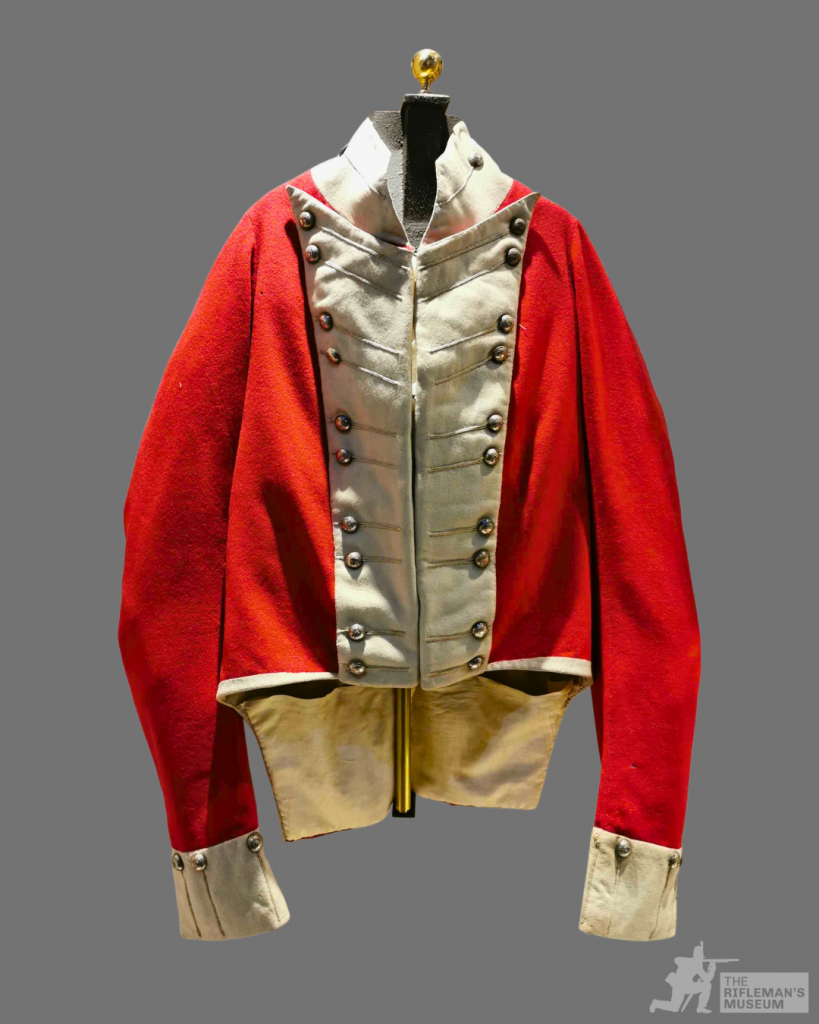
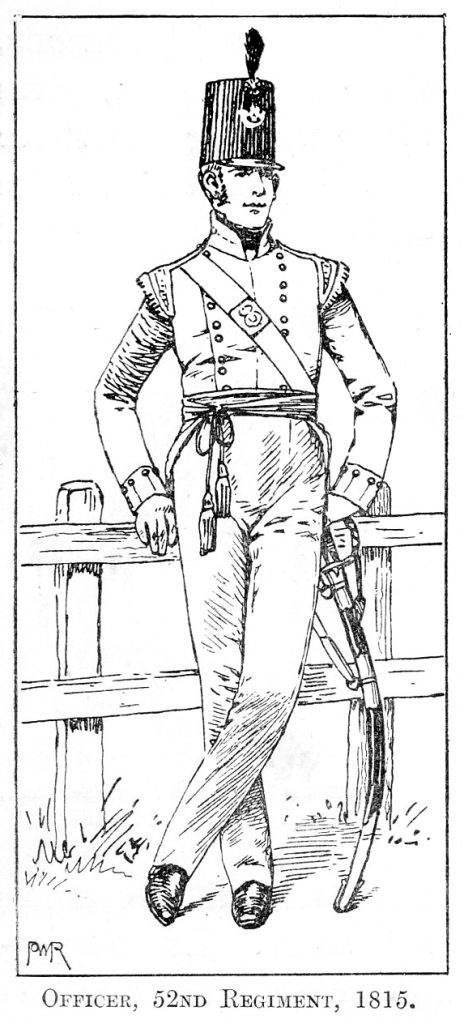
Coatee (left); Illustration of Officer of 52nd Regiment circa 1815 (right).
About Lieutenant-Colonel John Hunt
John Hunt entered the 52nd Regiment in 1799 and enjoyed a long and active career across many campaigns of the Napoleonic Wars. He first served in the expedition to Ferrol and against Cádiz in 1800, and in Sicily in 1806, where he became aide-de-camp to Sir John Moore. Hunt accompanied Moore to Sweden in 1808 and later to Portugal, taking part in the retreat from Astorga to Vigo during the Corunna campaign.
In 1809 he joined the Walcheren Expedition and in 1811 re-embarked with the 52nd for the Peninsular War. He fought at Sabugal and Fuentes d’Onor, and in every major engagement of the 2nd Battalion. By 1812, he was in command of the 1st Battalion at the siege and assault of Badajoz, and later assumed command of the 2nd Brigade of the Light Division. Throughout that campaign he led his men at the Battle of Salamanca and in a series of hard-fought actions that followed.
Compelled by ill health to return home in 1813, Hunt later rejoined the regiment in the Pyrenees and took part in the repulse of Marshal Soult’s columns. That same year, during the storming of San Sebastián on 31 August 1813, he commanded the volunteers of the Light Division in the assault on the fortress. Advancing through the breached walls under heavy fire, Hunt was twice severely wounded — one of the wounds leaving him permanently lamed after a musket ball lodged beneath his left knee. He recorded the incident in his Peninsular War Diary:
“On reaching the summit, I found myself only with about ten of my men, the rest including Captain R[obert] Campbell, Lieutenant Harvest, O’Connell 43rd &c were either killed or disabled… At length while in the act of taking hold of the colour of a Portuguese regiment with one hand and stepping over the crest of the breach, I received a ball under my left knee which knocked me completely over and put an end to all further exertion on my part.”
—Peninsular War Diary of Lieutenant-Colonel John Hunt
Despite his injuries, his leadership during the attack was widely admired.
For his distinguished service, Hunt received three medals and was made a Companion of the Order of the Bath (CB). He later held several staff appointments at home before his death in 1857.

